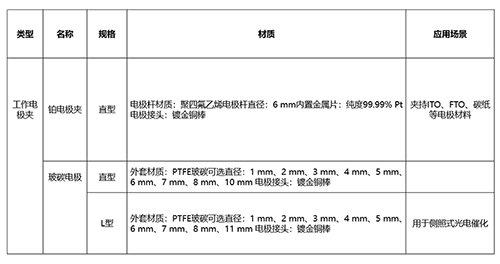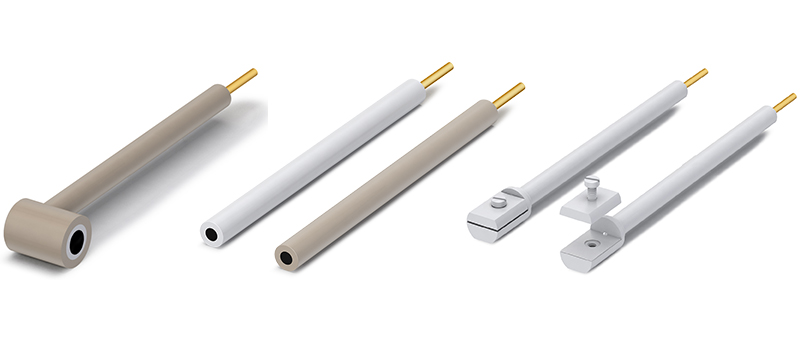Electrode is an electronic conductor or semiconductor that comes into contact with an electrolyte solution or an electrolyte, forming a multiphase system.
Electrochemical systems utilize electrodes for the input or output of electrical energy, and the electrode serves as the site of electrode reactions.
In a typical electrochemical system, there are three electrodes: the working electrode, the reference electrode, and the counter electrode.
The **working electrode** (WE), also known as the research electrode, is the electrode where the reaction under investigation takes place. In photoelectrochemistry, a common working electrode is a photoelectrode. The working electrode can be solid or liquid, and a variety of conductive solid materials can be used as electrodes. The choice of electrode material is typically based on the nature of the research. The most common "inert" solid electrode materials include glassy carbon, platinum, gold, silver, lead, and conductive glass.
For experimental purposes, the working electrode is often held in place with electrode clips. Common options include platinum electrode clips and glassy carbon electrode clips.

